Few sights capture the spirit of the American West like wild horses galloping across open landscapes. These magnificent creatures—descendants of horses brought by Spanish explorers, escaped ranch stock, and cavalry mounts—now roam freely across public lands throughout the western United States. Their presence connects visitors to both the natural world and the region’s rich frontier history.
Here is a list of 15 remarkable places where you can witness these majestic animals in their natural habitat, each offering a unique glimpse into wild horse behavior and the conservation efforts protecting them.
Pryor Mountains, Montana

The Pryor Mountain Wild Horse Range stretches across 38,000 acres of Montana wilderness near the Wyoming border, home to herds directly descended from Spanish colonial horses. These distinctive mustangs often display primitive markings—dorsal stripes and zebra-patterned legs—that reveal their ancient lineage.
The range’s varied terrain of juniper forests, high meadows, and desert lowlands creates perfect viewing conditions, with horses frequently visible along the rough Burnt Timber Ridge Road during summer months.
McCullough Peaks, Wyoming

Just east of Cody lies the McCullough Peaks Herd Management Area, where approximately 150 wild horses roam across 110,000 acres of windswept prairie. The horses here showcase extraordinary color variations, from striking palominos to richly dappled grays, making them particularly photogenic against the red-banded badlands.
Visitors can access prime viewing spots via the McCullough Peaks Road, though binoculars prove essential as these horses maintain a cautious distance from humans.
Like Travel Pug’s content? Follow us on MSN.
Sand Wash Basin, Colorado
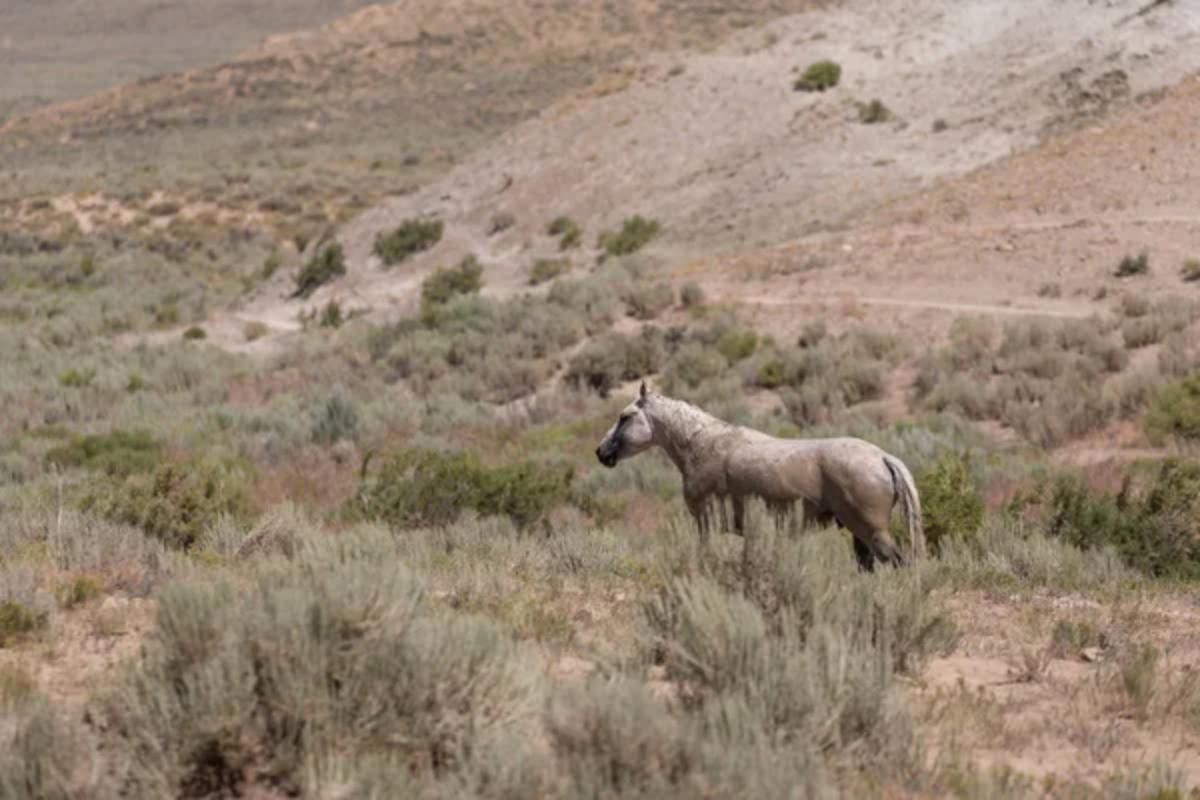
The Sand Wash Basin’s 250 wild horses represent one of Colorado’s largest and most accessible herds, wandering across 157,000 acres of high desert terrain. The basin gained fame through the palomino stallion “Picasso,” whose distinctive markings and long life made him a social media celebrity before his presumed passing.
Spring visits offer optimal chances to witness dramatic stallion confrontations and newborn foals taking their first wobbly steps across the sagebrush flats.
Onaqui Mountains, Utah
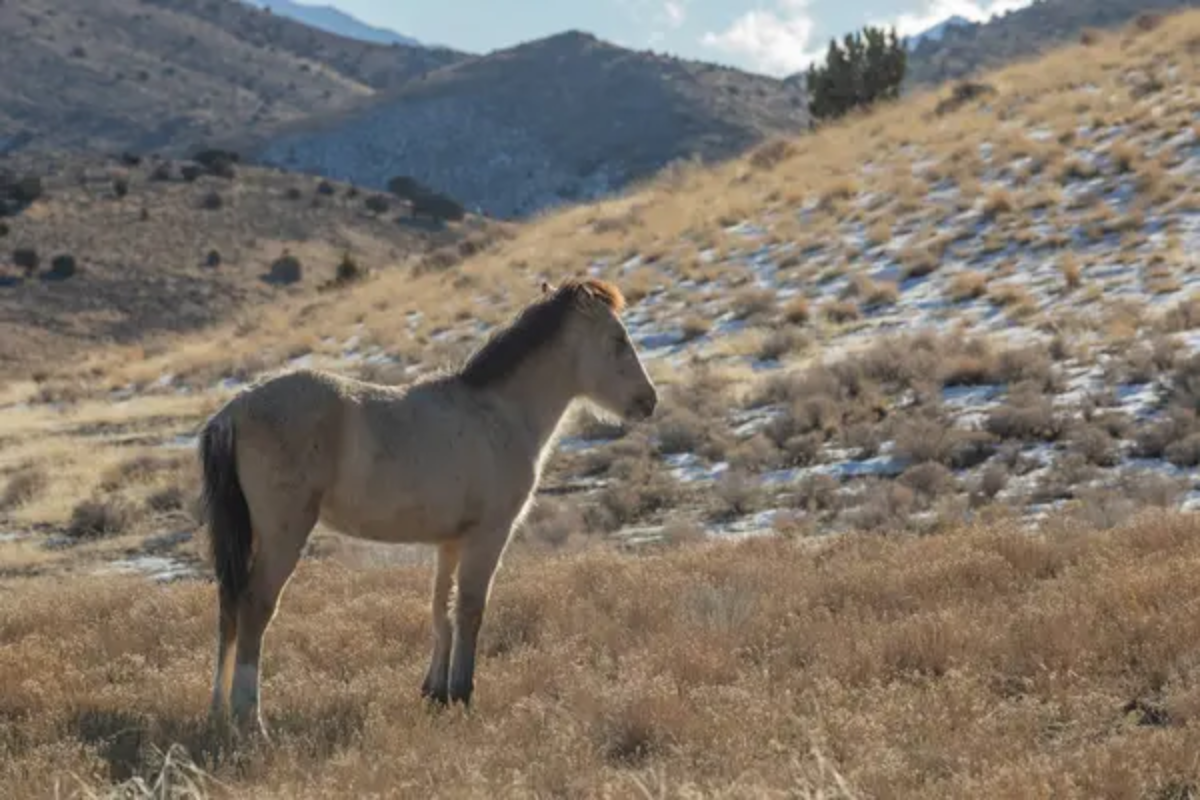
Just two hours from Salt Lake City, the Onaqui herd has become among the most photographed wild horses in America, with roughly 300 animals roaming the sagebrush-covered foothills. Their unusual comfort with respectful human presence makes this an unparalleled location for close observation, while their tendency to gather near the Simpson Springs historic Pony Express station adds historical resonance to the experience.
Dawn visits typically yield the most rewarding encounters as horses gather at water sources.
Virginia Range, Nevada
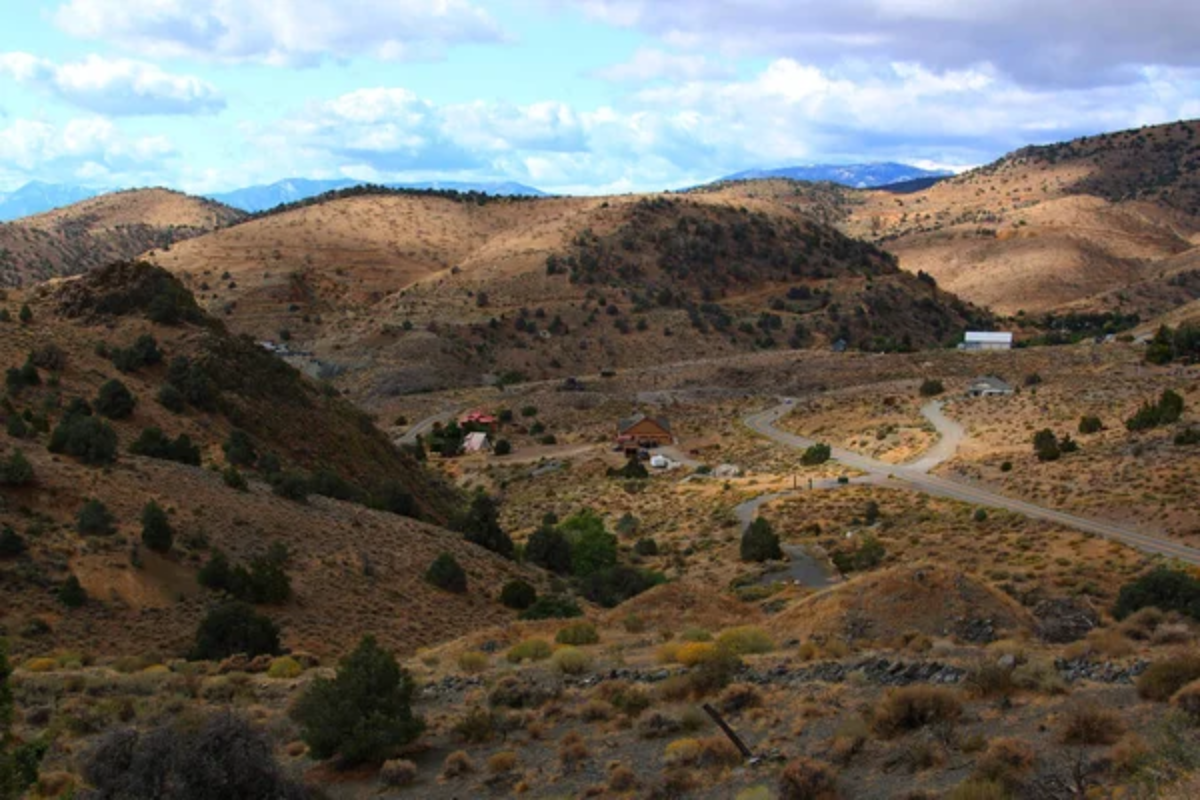
The Virginia Range’s wild horses hold special historical significance—these are descendants of the very mustangs that advocate Velma Johnston (known as “Wild Horse Annie”) fought to protect, leading to the watershed 1971 Wild Free-Roaming Horses and Burros Act. Around 3,000 horses roam through these mountains east of Reno, adapting to life unusually close to urban development.
Dawn drives along Highway 341 often reveal horses grazing in roadside meadows, with the Sierra Nevada providing a dramatic backdrop.
Like Travel Pug’s content? Follow us on MSN.
Steens Mountain, Oregon
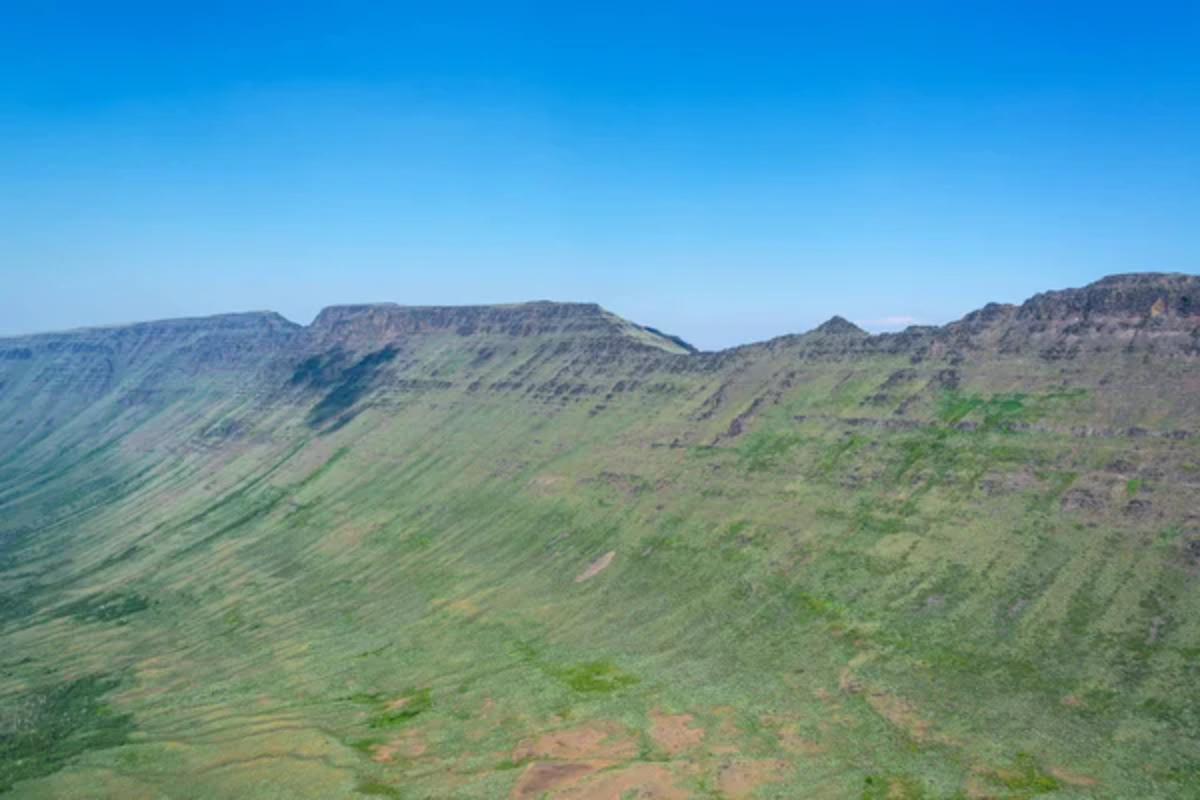
The South Steens Herd Management Area encompasses 134,000 acres of Oregon’s high desert, where approximately 200 wild horses have adapted to the extreme conditions of this remote region. The horses here display remarkable hardiness, thriving in a landscape that transitions from sagebrush plateau to alpine meadows.
Fall visits coincide with the horses’ most active period, as they build fat reserves for winter, creating perfect viewing opportunities from the East Steens Tour Route when aspens turn golden alongside the roaming herds.
Assateague Island, Maryland/Virginia

While technically not in the “West,” Assateague Island’s wild horses offer the most accessible wild horse viewing experience in the United States. These smaller, stockier ponies—made famous by Marguerite Henry’s “Misty of Chincoteague”—roam freely across barrier island beaches and salt marshes, often approaching visitors despite park regulations prohibiting contact.
Their adaptation to coastal living—drinking from freshwater ponds and eating marsh grasses other horses would reject—demonstrates the remarkable adaptability that has allowed wild horses to survive across diverse American landscapes.
Little Book Cliffs, Colorado
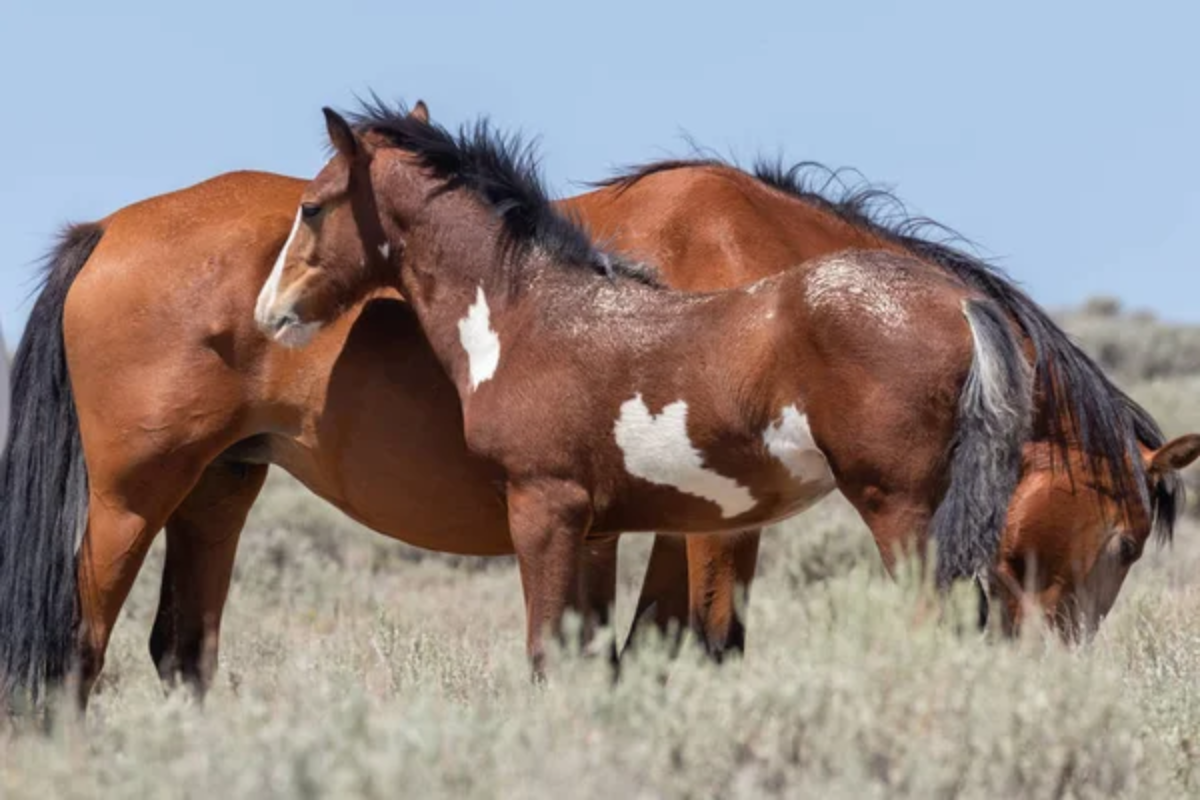
Tucked away north of Grand Junction, the Little Book Cliffs Wild Horse Area preserves 36,000 acres of dramatic canyons and plateaus where roughly 150 mustangs maintain their freedom. These horses display unusual behavioral adaptations to their vertical territory, navigating steep terrain that would challenge domestic horses.
The Coal Canyon access point offers reliable viewing opportunities, particularly near water sources during summer mornings when bands descend from higher elevations seeking relief from the heat.
Like Travel Pug’s content? Follow us on MSN.
Twin Peaks, California/Nevada
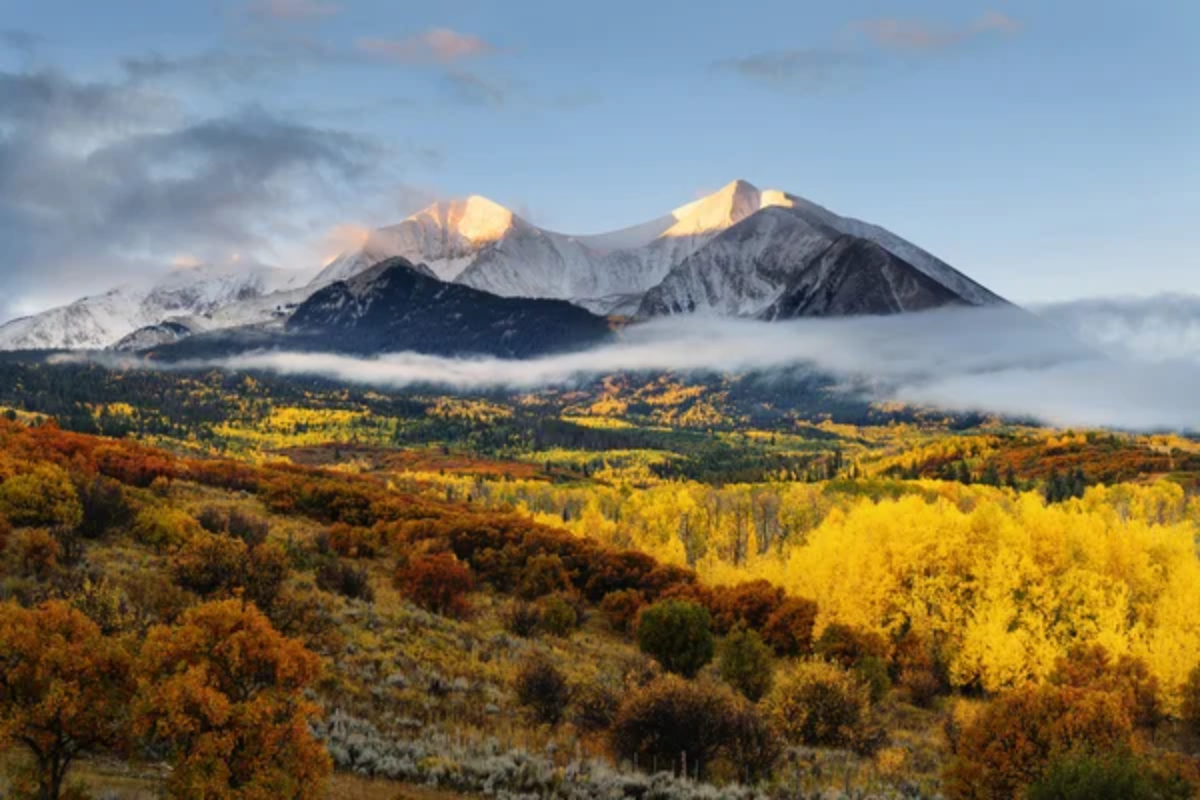
Straddling the California-Nevada border, the Twin Peaks Herd Management Area spans over 798,000 acres of high desert, supporting approximately 500 wild horses amid ancient juniper woodlands and sagebrush valleys. The horses here show distinctive traits from multiple bloodlines, including draft horse influences visible in larger, more robust individuals.
The area’s volcanic rock formations create natural observation points where visitors can glass for horses across vast open spaces while remaining downwind to avoid detection.
Cerbat Mountains, Arizona
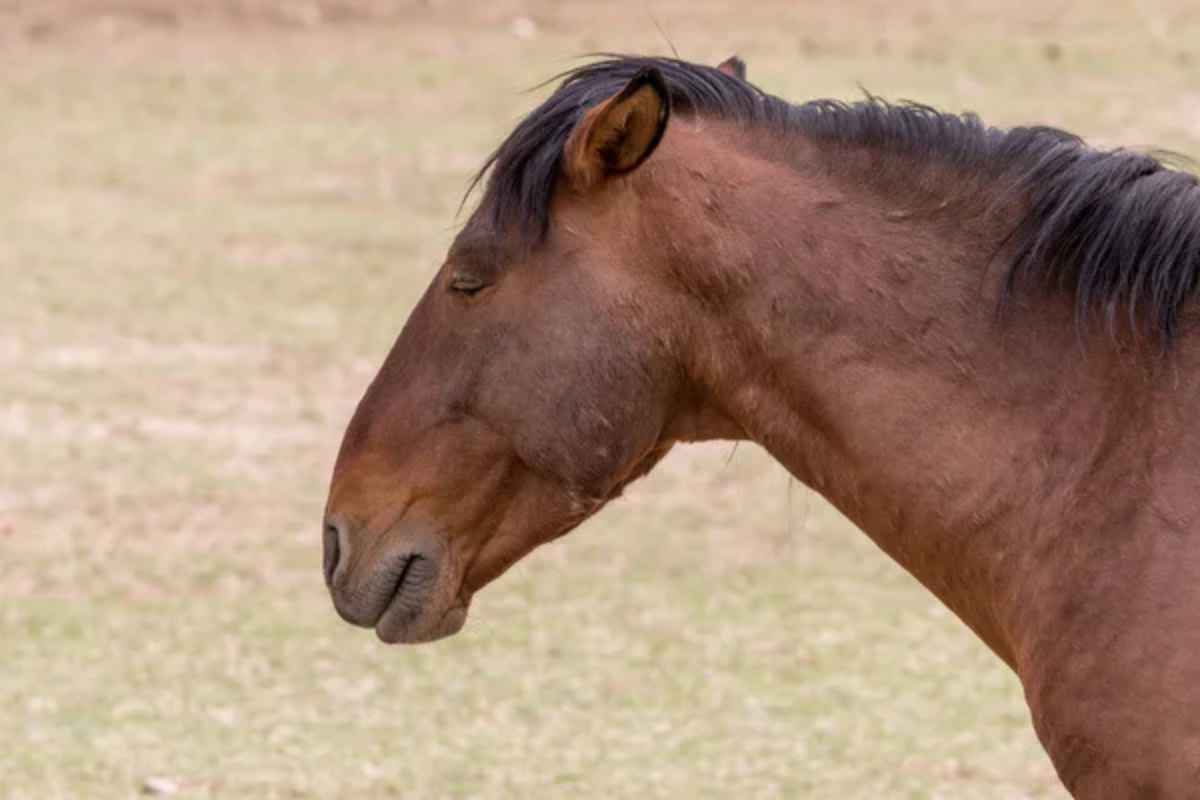
The rugged Cerbat Mountains near Kingman harbor one of America’s genetically purest Spanish Mustang populations, with DNA testing confirming their direct descent from horses brought by conquistadors in the 1500s. Fewer than 100 horses inhabit this harsh desert range, developing specialized water-conservation adaptations and feeding patterns.
Dawn hikes along Big Wash Road occasionally reveal family bands moving between water sources, their movements dictated by ancient seasonal patterns rarely disrupted by human presence.
Saylor Creek, Idaho
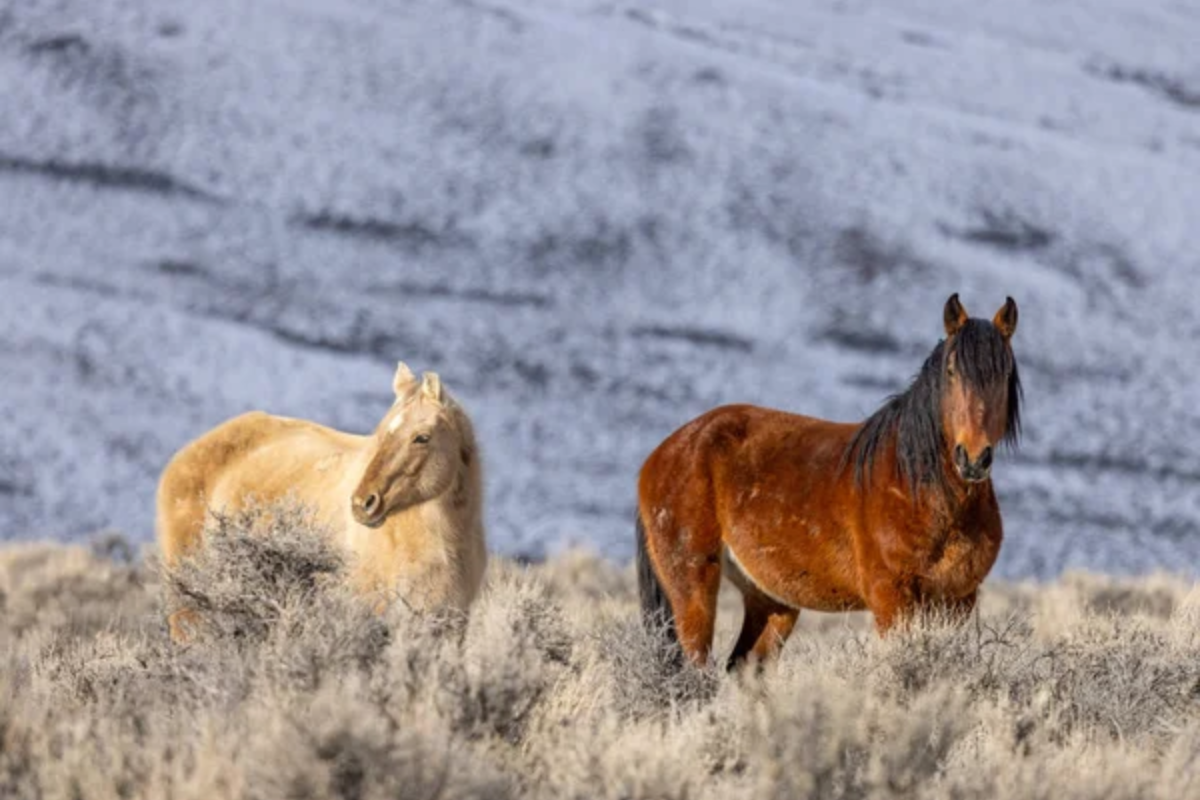
Idaho’s wild horse country remains largely overlooked despite hosting several significant herds, including the Saylor Creek population south of Boise. These horses roam across 95,000 acres of high desert where lava flows create unusual microhabitats and distinctive scenery.
The herd demonstrates remarkable color variety—from blue roans to striking buckskins—making them visually distinctive against black volcanic landscapes. The area’s sparse visitation means horses here maintain more natural behavior patterns than those in heavily trafficked viewing areas.
Like Travel Pug’s content? Follow us on MSN.
Devils Garden, California
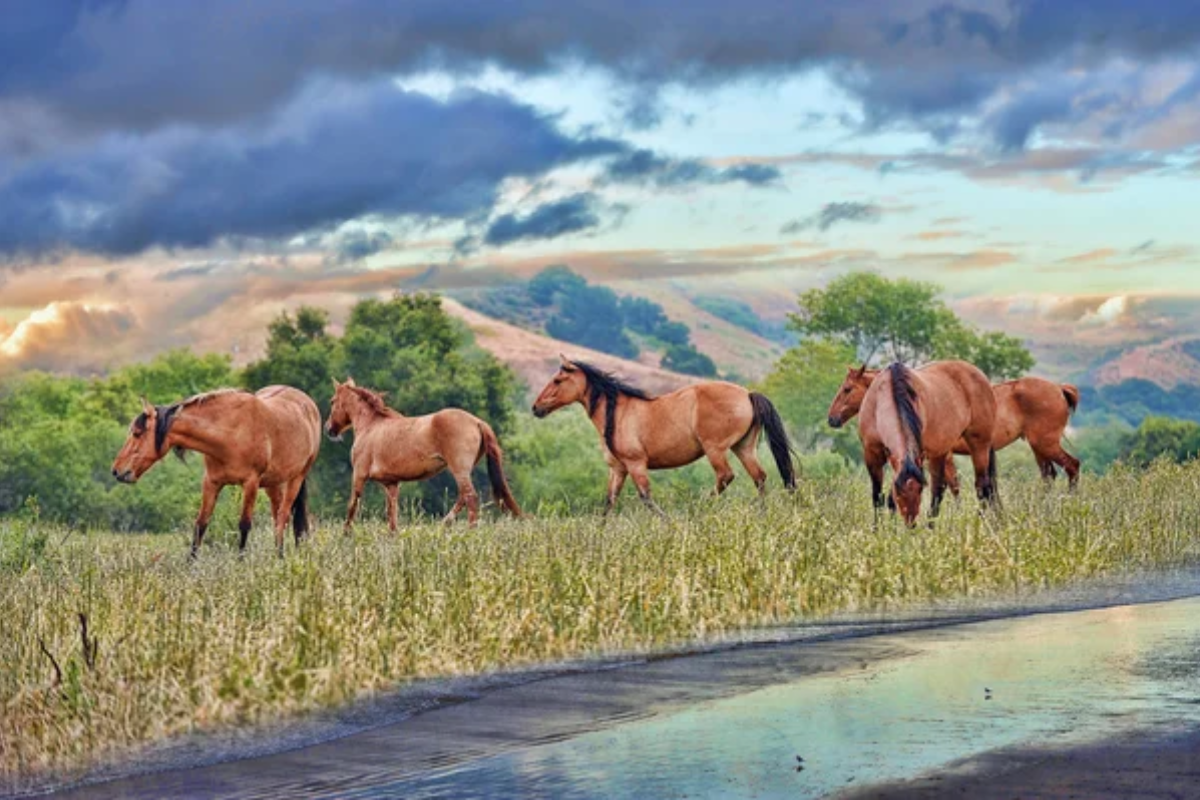
Northern California’s Modoc Plateau contains the Devils Garden Plateau Wild Horse Territory, where approximately 2,500 mustangs roam an otherworldly landscape of twisted juniper and volcanic formations. These horses display unusual forest-adaptation behaviors, sometimes traveling in smaller bands than typical desert herds and developing specialized feeding patterns for woodland environments.
The Alturas access points provide viewing opportunities, particularly during migration seasons when horses move between summer and winter ranges.
Theodore Roosevelt National Park, North Dakota
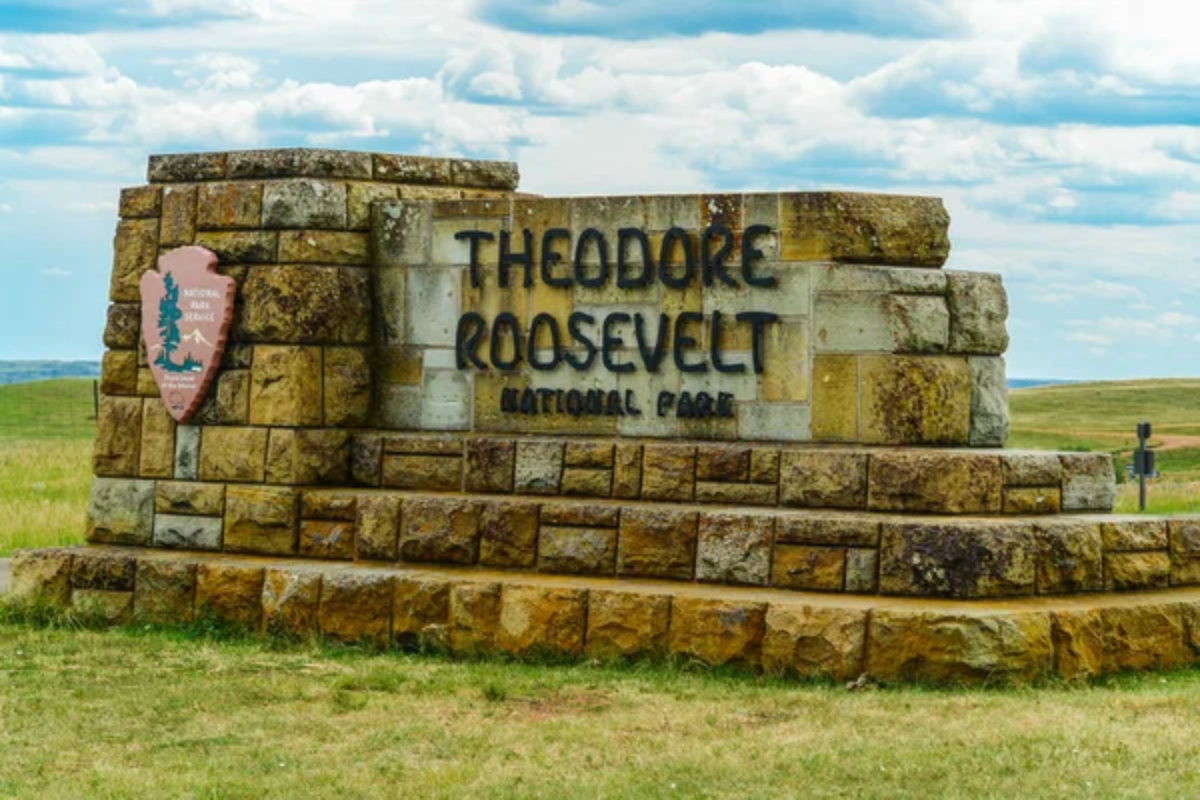
While not technically wild under federal definitions, the free-roaming horses within Theodore Roosevelt National Park offer exceptional viewing opportunities in a landscape that perfectly captures the spirit of the American West. The park’s South Unit contains several bands traveling through colorful badlands, creating picture-perfect scenes against eroded buttes and prairie grasslands.
The park’s wildlife drive provides reliable viewing without requiring strenuous hiking, making this an excellent option for less mobile visitors.
Tonto National Forest, Arizona
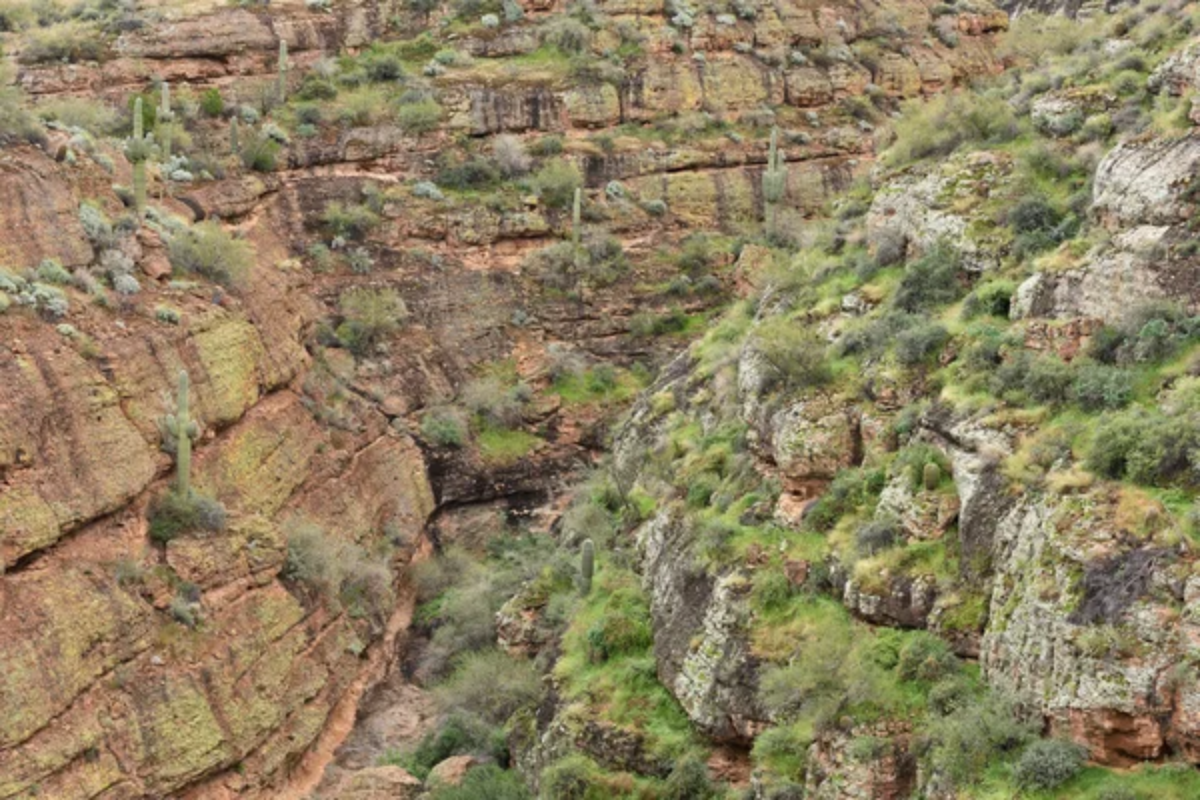
Central Arizona’s Tonto National Forest contains the Salt River Wild Horse Management Area, where approximately 500 horses roam along riparian corridors surprisingly close to Phoenix. Their proximity to urban areas makes them among the most observed wild horses in America, yet they maintain natural behaviors within their protected habitat.
Early morning visits to Coon Bluff and Phon D Sutton recreation areas often yield sightings of horses wading through the river or grazing beneath massive cottonwood trees along the banks.
Like Travel Pug’s content? Follow us on MSN.
Montgomery Pass, California/Nevada
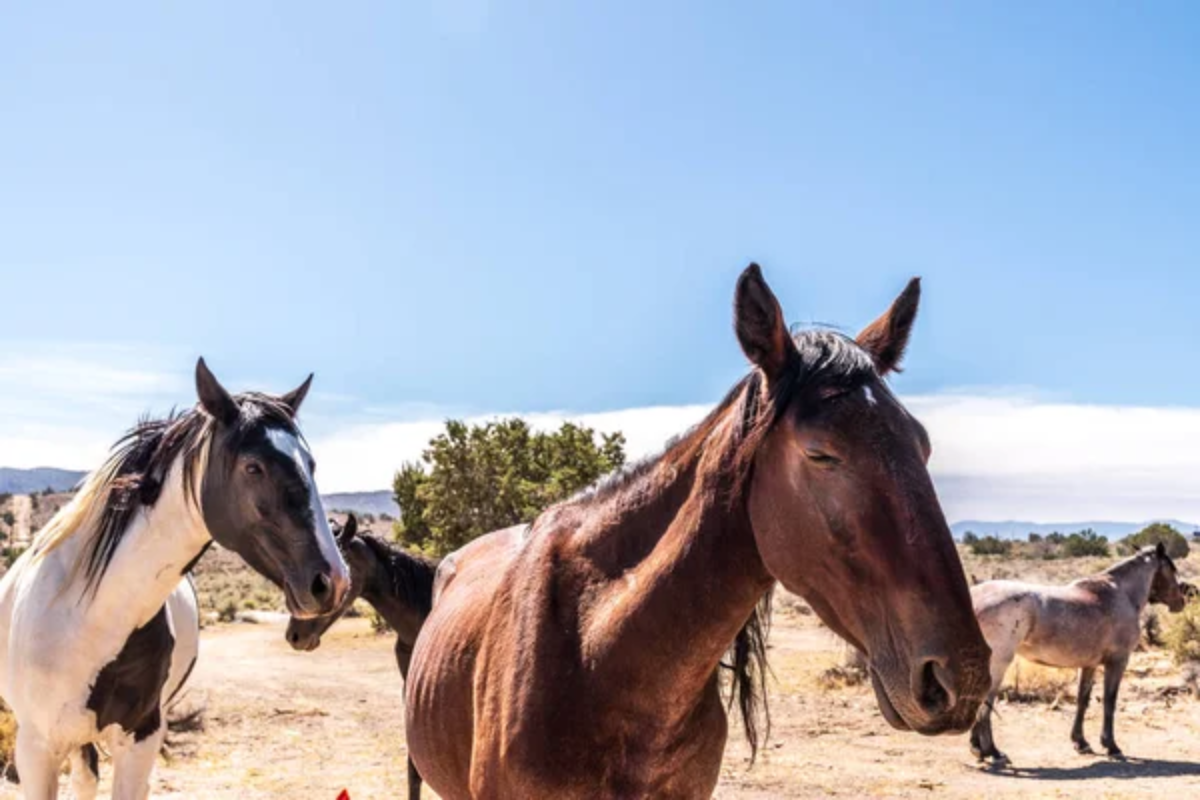
The remote Montgomery Pass Wild Horse Territory spans the California-Nevada border, supporting approximately 300 horses in high-elevation terrain where unusual predator-prey dynamics have developed. Unlike most wild horse areas where mountain lions rarely hunt adult horses, this region has documented regular predation, creating natural population controls.
The resulting behavioral adaptations—including unique defensive formations and vigilance behaviors—offer wildlife viewers rare opportunities to observe wild horses employing survival strategies largely lost in other herds.
Guardians of American Heritage
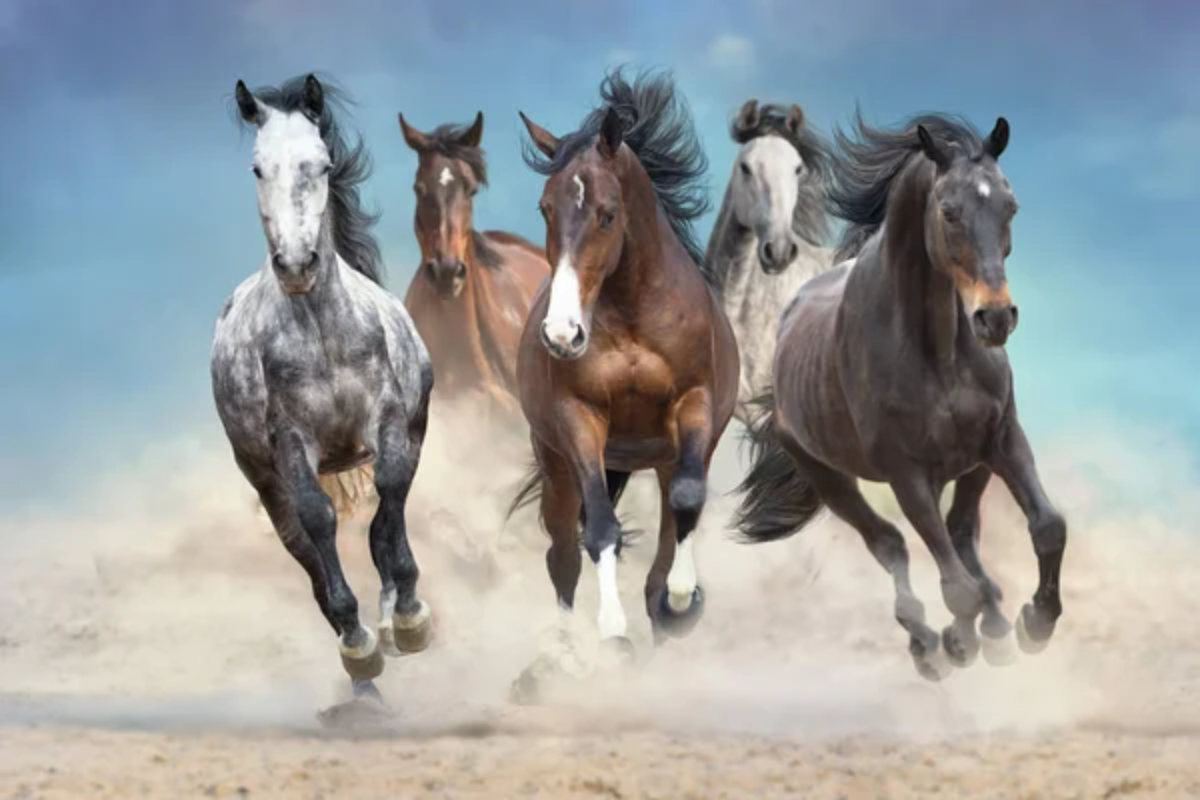
These wild horses represent more than just beautiful animals—they embody America’s complex relationship with western lands and wildlife management. While their presence sometimes sparks controversy around habitat impact, their cultural and historical significance remains undeniable.
Observing these free-roaming creatures connects modern visitors to both ancient natural patterns and the frontier spirit that continues to define the American West’s identity, preserving living history in an increasingly developed landscape where such direct connections to the past grow more precious with each passing year.
More from Travel Pug

- 20 Towns Built for One Purpose That Were Later Abandoned
- 15 Hidden Spots in Disney World’s Magic Kingdom Most Visitors Miss
- 20 Once-Popular Beach Towns That Are Now Ghostly Empty
- 15 Canyons in the U.S. That Are Just as Stunning as the Grand Canyon
- 10 Under-the-Radar Mountain Towns That Are Both Affordable and Beautiful
Like Travel Pug’s content? Follow us on MSN.
